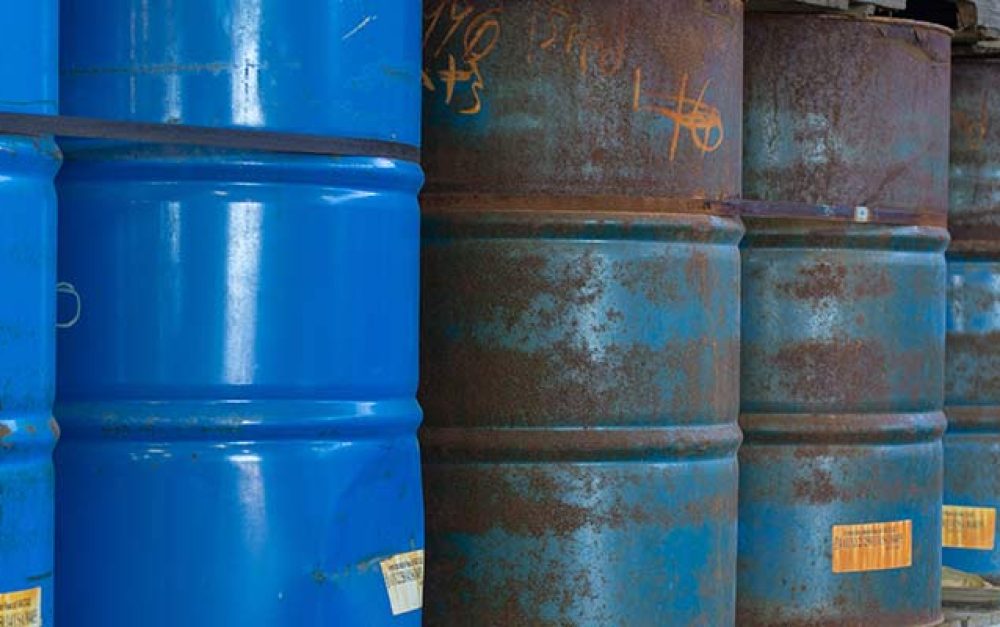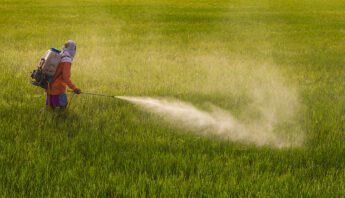Bhopal, India – On December 3, 1984, more than 8,000 people died during one of the worst industrial accidents in history when a pesticide manufacturing plant exploded in the middle of the night. Twenty thousand more have died since as a result of this one event. Bhopal’s sister plant still manufactures the same pesticide in the U.S. today in Institute, West Virginia, and hundreds more facilities making pesticides operate around the world.
Gert Town, Louisiana – After shutting down in the 1980s, the Thomson Hayward company left behind four million pounds of DDT waste at a plant across the street from a community playground and elementary school. Even though DDT use was banned in the US more than 30 years ago, residents of Gert Town suffer from a host of health problems associated with exposure to the pesticide.
The beginning and end of the pesticide lifecycle often get scant attention – despite their very real dangers. Manufacturing plants can sicken workers and nearby communities, pollute waterways, and cause dangerous accidents. Later, as pesticides become obsolete or illegal, disposal sites contaminate soil and seep into water supplies for years, and nearby communities and taxpayers are often left to clean up the mess. PAN has been working with partners for decades to shine a light on this largely invisible global threat.
Dirty & Dangerous Production
Pesticide plants are commonly part of the sprawling industrial complexes confronting frontline communities. Risks of serious health impacts – such as cancer – are often much higher in communities living near manufacturing or processing facilities. For example:
- Residents in Louisiana’s “Cancer Alley” report sky-high cancer rates compared to the national average.
- Members of the Aamjiwnaang First Nation in Ontario, Canada experience the heaviest load of chemical pollution in the province, and now see twice as many girls as boys born every year, and have high rates of death, miscarriage and disease.
Studies document that low-income communities and communities of color are more likely to live near chemical plants, and so face a greater risk. Workers in chemical plants are also exposed to hazardous chemicals – often without adequate safety protections.
Contamination Lingers for Decades
More than twenty-five years after the Bhopal explosion, the area surrounding the Union Carbide plant remains a toxic waste site. Similar stories of problems from past production and dumping can be found all over the United States:
- Alma, Michigan’s Pine River Superfund site: Widespread petrochemical and pesticide contamination.
- Palos Verde offshore shelf, near Los Angeles, California: 1800 tons of DDT residues still leach into the ocean waters.
- St. Lawrence Island, Alaska: Contamination from military chemical and pesticide production and dumping.
- Lake Apopka, Florida: pesticide contamination has caused severe health harms to generations of farm workers and residents.
While some sites have been cleaned up or sealed, many others continue to contaminate communities who live nearby, with the polluters taking little or no responsibility for cleaning up the mess. Billions of taxpayer dollars go to cleaning up after the pesticide industry.
Old pesticide containers are another source of harm. In communities throughout the Global South, empty containers are routinely washed and used for storage of water and other liquids – sometimes for human consumption. This directly exposes people to pesticide residues, and can cause serious poisoning.
Community education and outreach, as well as effective programs for safe disposal of empty pesticide containers are desperately needed. Pesticide producers should be funding such programs, and taking responsibility for collection and safe disposal of old pesticide containers. Some U.S. states do have such programs, but implementation is not always strong, and the global problem remains.
Stockpiles of old and degrading pesticides pollute the environment wherever they are located. The Africa Stockpiles Program, co-designed by PAN-UK and the Food and Agriculture Organization, estimates there are at least 50,000 tons of such stockpiles scattered over the African continent, often stored haphazardly in rusting drums and torn, overflowing sacks, posing a serious threat to nearby communities. Similar problems have been documented in parts of Eastern Europe, Asia and Latin America. In the U.S., pesticides are found in many of the hundreds of Superfund hazardous waste sites across the country.
Africa has more than 50,000 tons of old pesticide stockpiles.
Illegal use of banned pesticides have been reported from many parts of the world. Pesticides such as DDT, banned for agricultural uses around the world, are sold through the black market or even openly in small, unregulated shops.
Many such pesticides are either obtained from old stockpiles or from illegal production. In India, for example, DDT is still commonly used for vegetable and fruit production.







